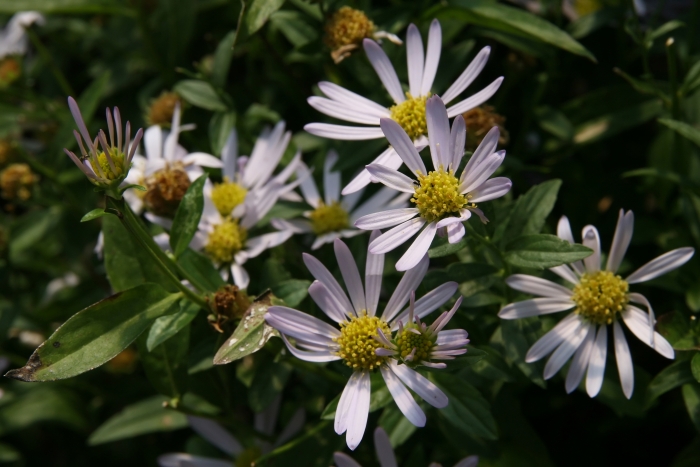White Doll’s Daisy
(Boltonia asteroides)
White Doll’s Daisy (Boltonia asteroides)
/
/

Photo by David J. Stang
CC BY-SA 4.0

























































Estimated Native Range
Summary
White Doll’s Daisy is valued for its late-season blooms and ability to naturalize in suitable conditions. It is often used in wildflower gardens, as a border plant, or in naturalized areas where its height can add vertical interest. This species thrives in full sun but can tolerate part shade, especially in hot climates. It prefers consistently moist soils with good drainage but can adapt to average garden conditions. While generally easy to maintain, it may require staking in rich soils to prevent flopping. Boltonia asteroides is not commonly associated with serious pests or diseases, but powdery mildew can occur in humid conditions. It is not known to be invasive and is a good choice for gardeners looking to support native flora and fauna.CC BY-SA 4.0
Plant Description
- Plant Type: Herb
- Height: 5-6 feet
- Width: 2-4 feet
- Growth Rate: Rapid
- Flower Color: White
- Flowering Season: Summer, Fall
- Leaf Retention: Deciduous
Growth Requirements
- Sun: Full Sun
- Water: Medium
- Drainage: Fast, Medium
Common Uses
Bank Stabilization, Bird Garden, Border Plant, Butterfly Garden, Deer Resistant, Hummingbird Garden, Low Maintenance, Salt Tolerant, Showy Flowers, Street Planting, Water Garden
Natural Habitat
Moist prairies, wet meadows, stream banks, and floodplains
Other Names
Common Names: Star Boltonia , White Doll’s-Daisy , Bolton’s Aster , Aster-Like Boltonia , White Boltonia , Asterlike Boltonia , False Chamomile , False Aster , Scheinkamille , Boltonie Faux-Aster , Boltonie Blanche
Scientific Names: Boltonia asteroides , Boltonia asteroides var. glastifolia , Boltonia glastifolia , Boltonia asteroides f. rosea , Matricaria asteroides , Matricaria glastifolia , Actartife angustifolia , Actartife cuneifolia , Boltonia asteroides f. asteroides , Madea glauca
GBIF Accepted Name: Boltonia asteroides (L.) L’Hér.